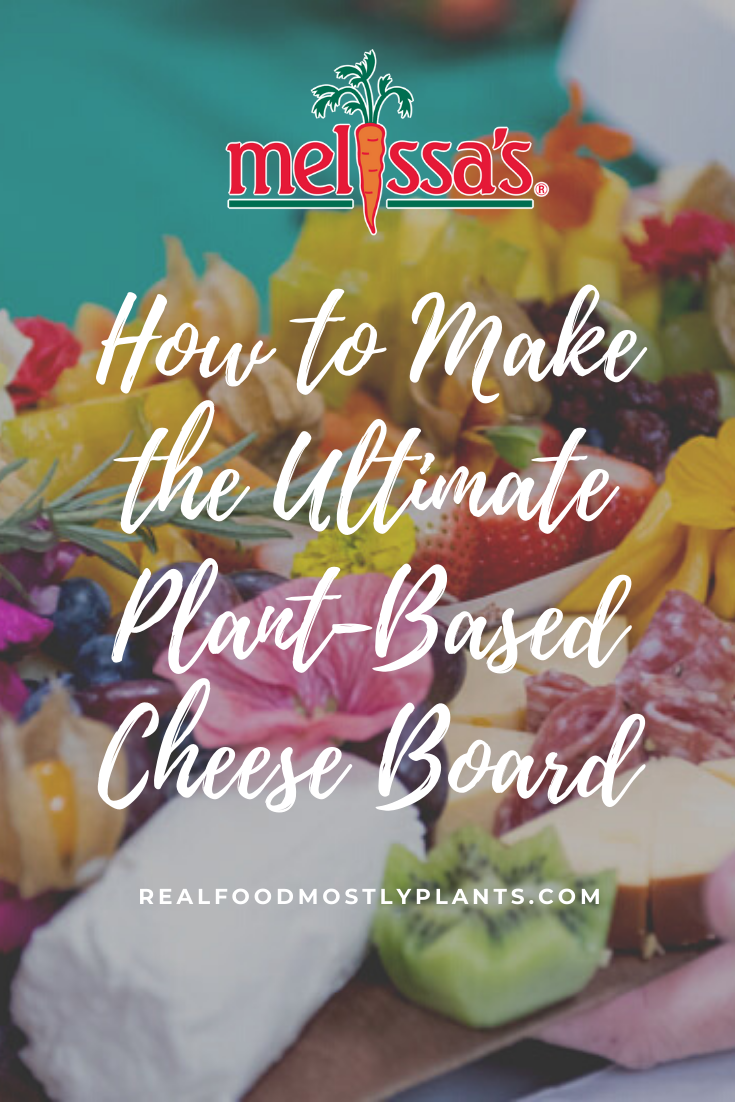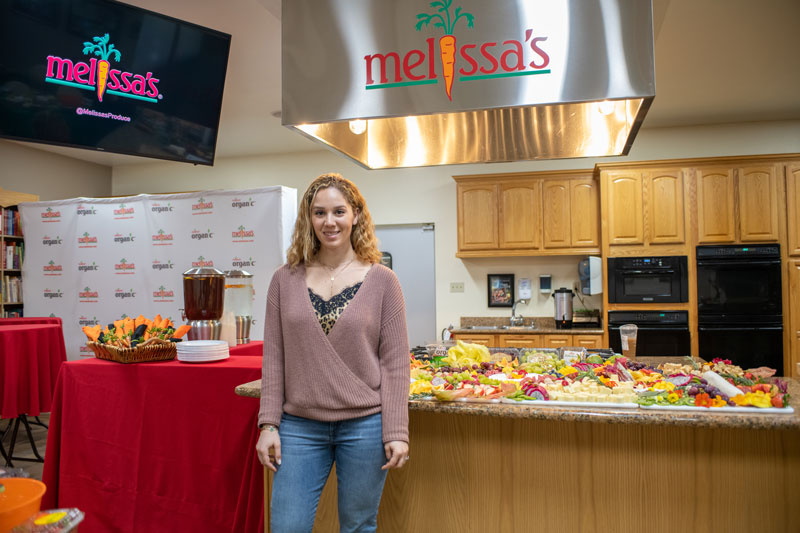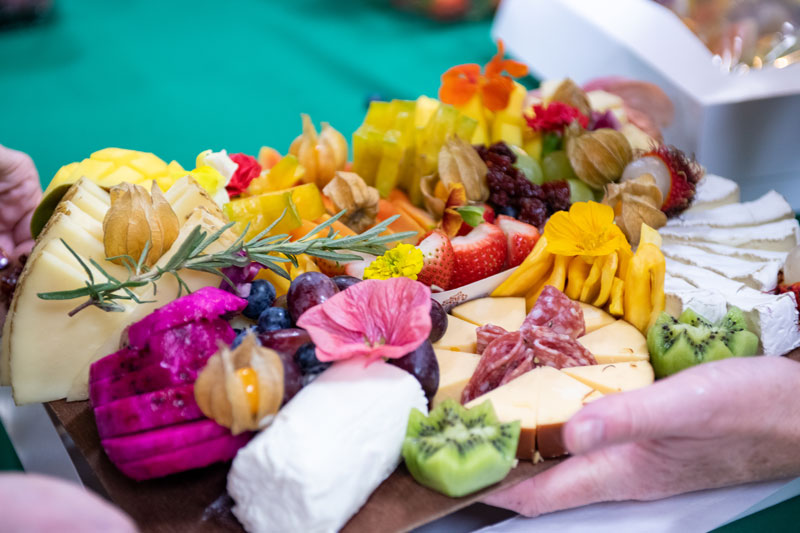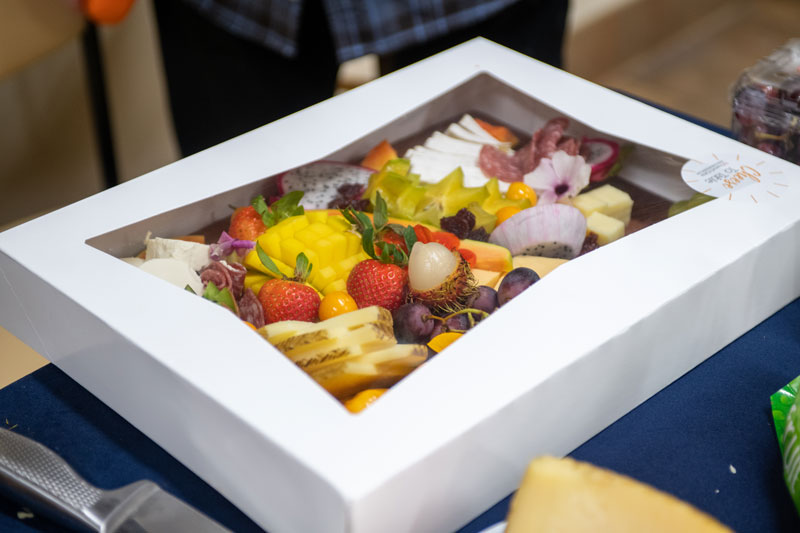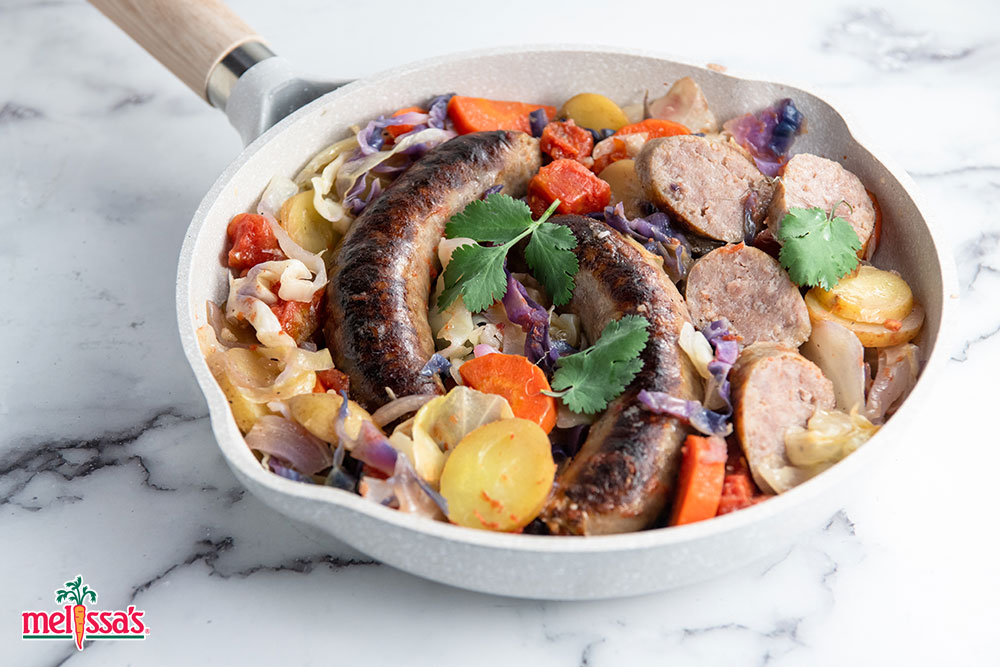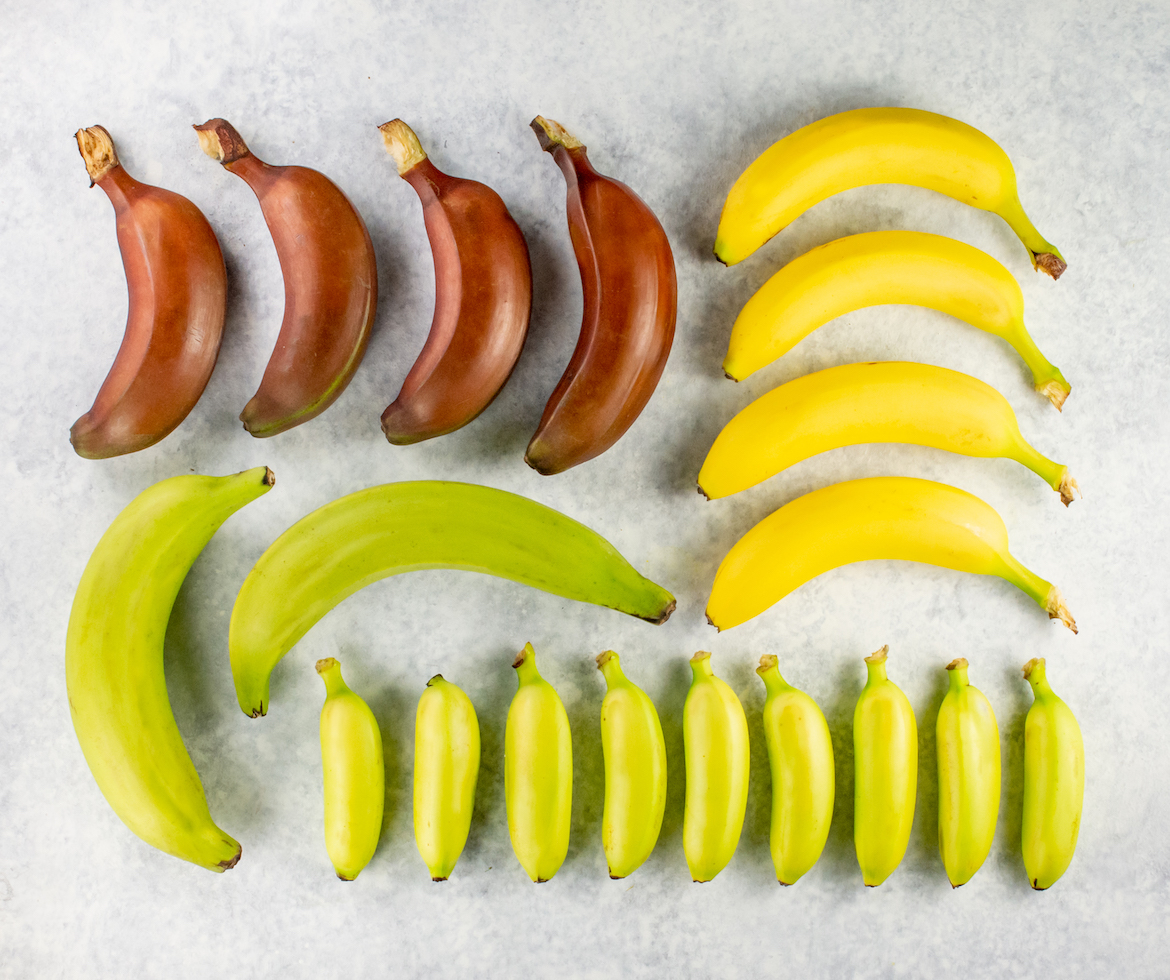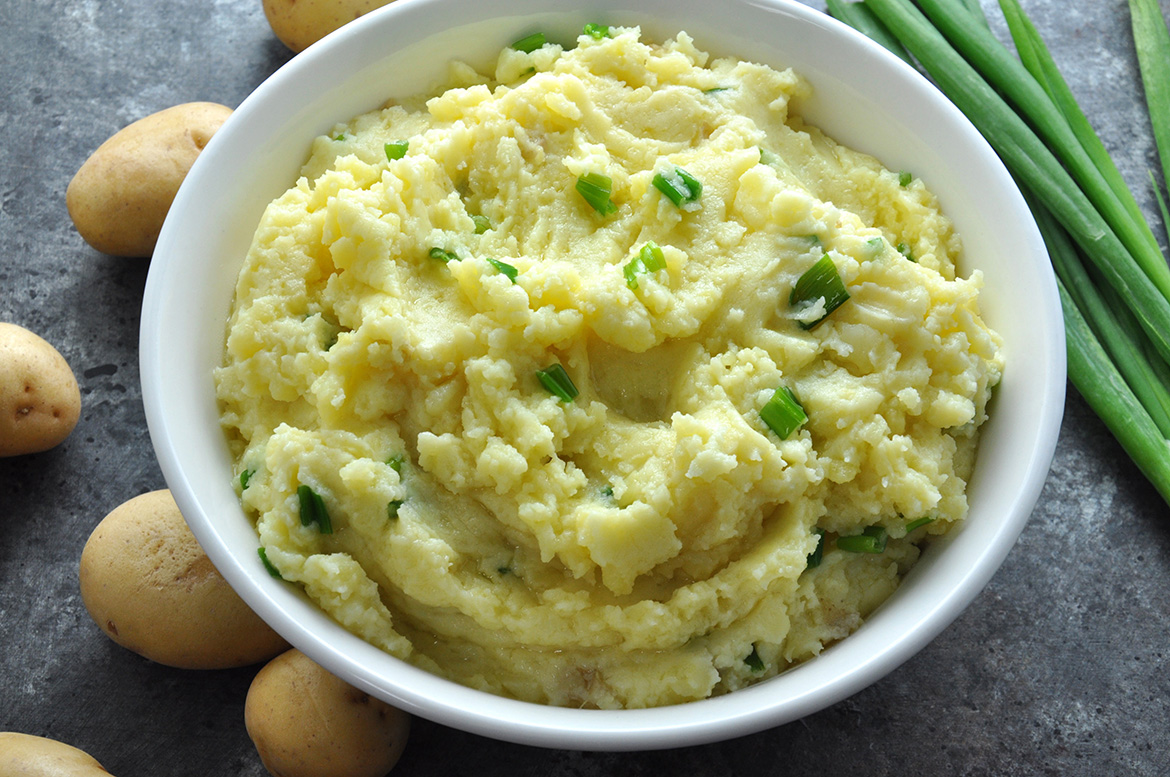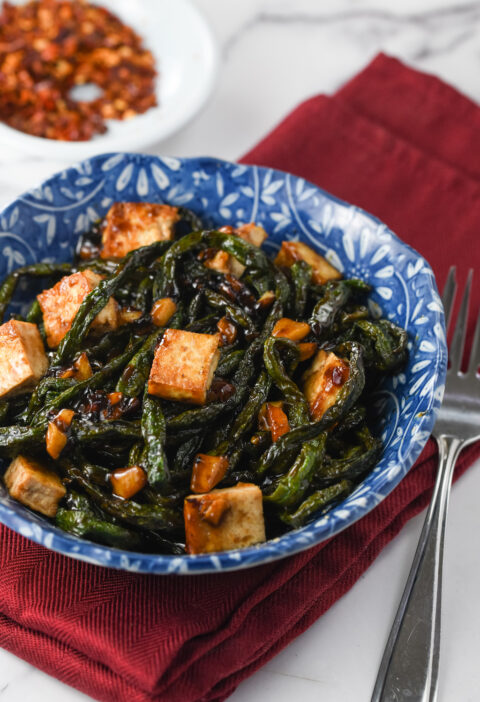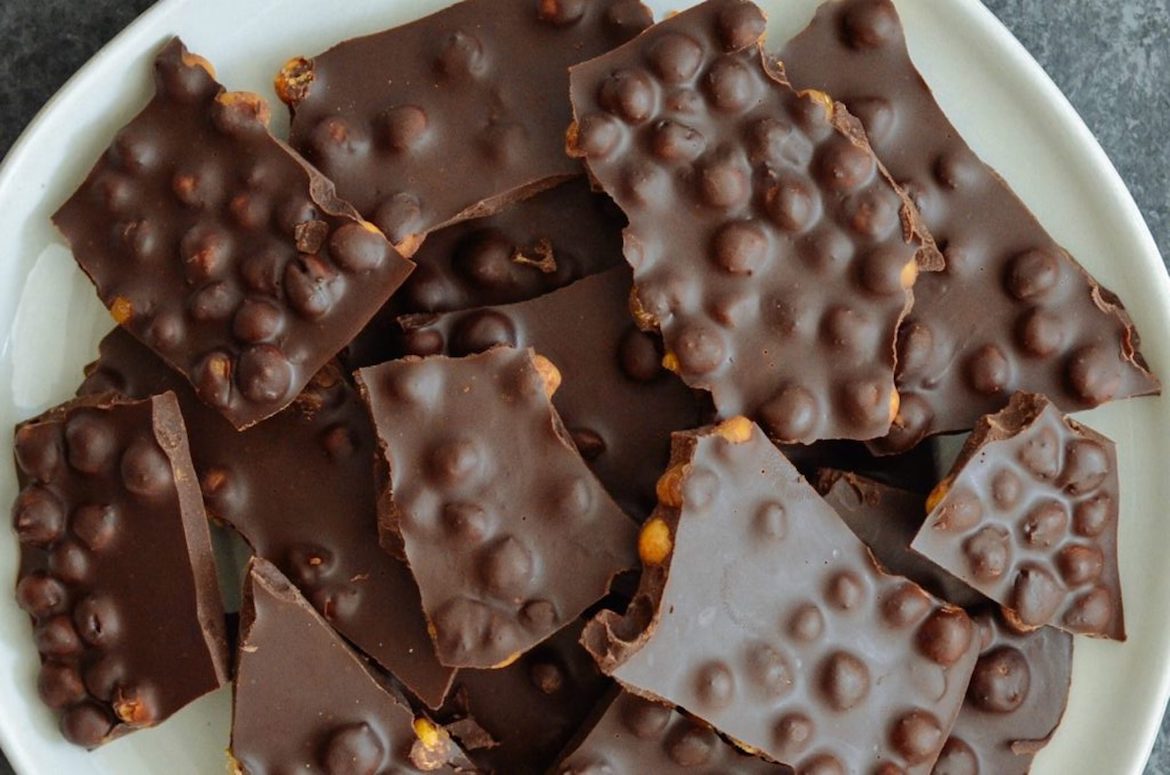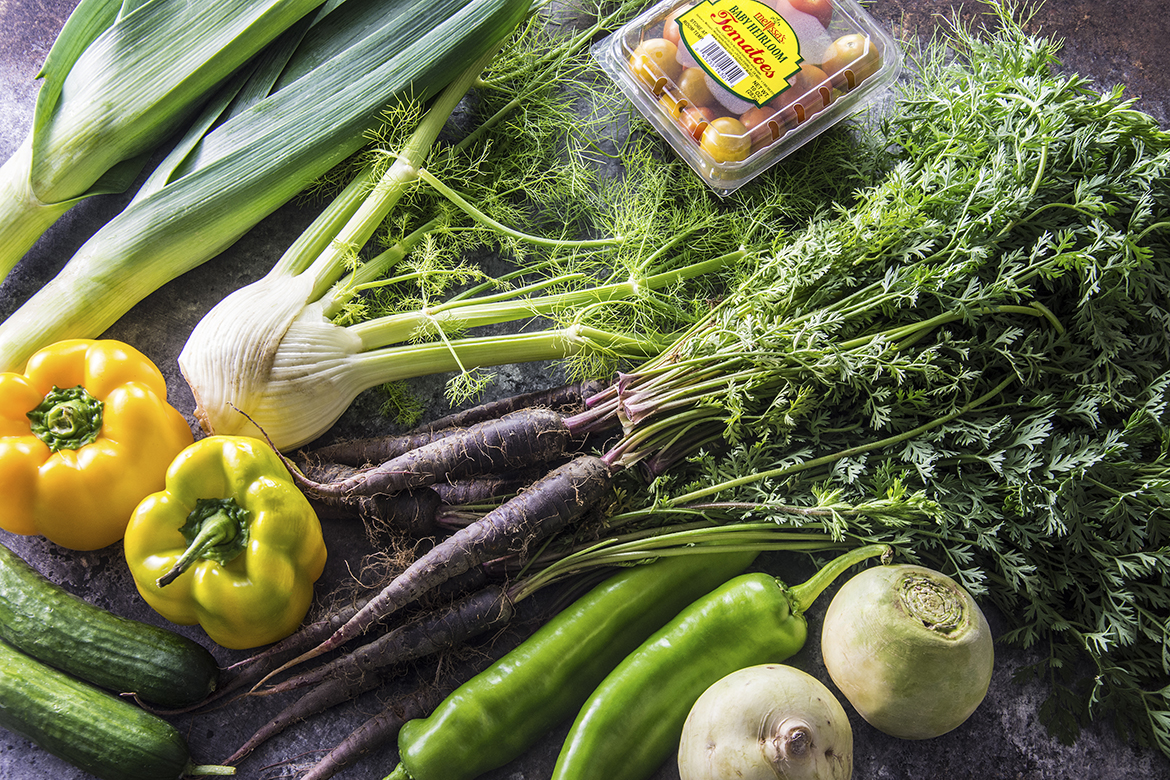Shelia Doloukani of Cheese To Table shows us the way to building the perfect plant-based cheese board.
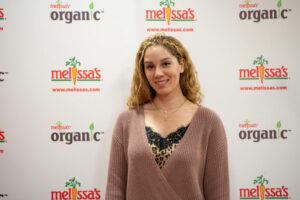
Melissa’s hosted Shelia Doloukani in their test kitchen for a cheese board building class for the media. A massive cheese and fresh produce board greeted attendees, assembled by Doloukani, with the assistance of Melissa’s chef’s team. Throughout the event, Doloukani shared tips and tricks on how to make the perfect cheeseboard while Melissa’s marketing representative, Robert Schueller, provided education regarding Melissa’s featured produce.
Doloukani has over eight years of experience in the food industry and brings more than just cheese to the table. Born into an Armenian family, Doloukani was privilege to lots of rich and delicious foods throughout her life. These experiences shaped Shelia’s adult life, pushing her to travel throughout the world to learn more about the art of making cheese. From Italy to Dubai, Australia and Seattle, Doloukani’s travels molded herself into the ultimate turophile.
For residents of the LA area who are into cheese boards but don’t have the time to make their own, they can reap the benefits of Shelia’s love of cheese through her business, Cheese To Table, where she crafts tasty cheese boards of various sizes for delivery.
For those of us who love a hands-on experience, Doloukani also hosts cheeseboard workshops like the one she provided for media in Melissa’s kitchen. After the event, we connected with Doloukani to get more insight on what building a plant-based board would entail. Read the full interview below!
Q&A With Shelia Doloukani of Cheese To Table
Q: What are the challenges in building a cheese board vs. building a plant-based cheese board?
Shelia Doloukani: Today’s food industry has made it less challenging to have a plant-based diet. A lot of restaurants and grocery stores offer lots of vegan options. However, it still can be a bit challenging when it comes to building a cheeseboard since the plant-based cheese category is not as broad as the regular cheese category. For the most part, everything that goes on a cheeseboard can be plant-based, such as seasonal fruits and vegetables, different jams and fruit pastes, pickled vegetables and various dried fruits and nuts.
Q: Do you pair vegan cheese the same way you do regular cheese?
SD: We do pair vegan cheeses the same way we do regular cheeses because, ultimately, the same healthy and vibrant fruits and vegetables that go on a default cheeseboard can work on a vegan cheeseboard. Most vegan cheeses are made with cashew milk, and that pairs very nicely with bright fruits such as Melissa’s Butterscotch™ Pears, pomegranates, Harry’s Berries and raspberries, and vegetables such as carrots, celery and Melissa’s Veggie Sweets.
Q: What qualities do you look for in your cheese selections for a board?
SD: The qualities I look for when it comes to my cheese selections for a board can be divided into two categories: texture and milk type. I try to have different cheeses made from different animals because it gives my guests a variety. Cow milk, sheep milk and goat milk are all wonderful options. Regarding textures, this is something I take very seriously because I love having creamy goat cheese and Manchego, which is made from sheep’s milk, and maybe a Gouda, which is made from cow’s milk. Applying these two rules will not only please everyone’s needs, but also, it’s not a repetitive option on the board.
Q: I’ve heard the perfect cheese board includes: aged, soft, firm and blue. Is this the magic fail-safe formula? Or are there other things to consider when making your cheese selections? Plant-Based Cheese Board
SD: Yes, having different textures and milk types definitely will give you that winning approval from your guests. However, if I have the chance, I consider who my guests will be. Are they on the bold side? Will they like blue cheese? I want to consider these options before making cheeseboards. Overall, having a variety of cheeses on the board is always a winner.
Q: Are there any plant-based cheeses you’d recommend?
SD: The plant-based cheese section seems to be growing, especially in the last few years. We do get plant-based cheese requests at times, and that’s when we use Miyoko’s and or Treeline French-style brands. Both are great brands and have different options and flavoring.
Q: What is the thought process behind selecting fresh produce to add to the board? Plant-Based Cheese Board
SD: Before making any cheeseboard, I love thinking about a theme or sticking to the season. In the spring/summer, we use apricots, pears, figs and watermelons. In the fall/winter, we use lots of tangerines, pomegranates and different berries. Sticking true to the season is the safest way to getting fresh produce.
Q: What are some tricks you have up your sleeve to take your cheese boards to the next level? Plant-Based Cheese Board
SD: Some tricks I use when it comes to taking my cheeseboards to the next level are making salami roses. I fold my salamis in two halves and then shape them into mini rose bouquets next to the cheeses. I also get creative when it comes to displaying the cheeses. When it comes to cutting the cheeses, I make sure I still respect the shape of the cheese but cut them down in small pieces, so it’s easier to grab for my guests. Lastly, I try to make the whole board as aesthetically pleasing as possible. Whether it’s combining a group of like color items or designing the cheeses, the possibilities are endless. I let my imagination run wild!
Q: What’s one piece of fruit that you think should be on every plate?
SD: It isn’t easy to choose just one piece of fruit since I’m a huge fruit fan in general, but if I had to pick, it would be grapes (Editor’s note: Melissa’s Muscatos™ are a great choice!). I always include grapes on every single board. The sweet yet tart flavors in grapes compliments so well with virtually every cheese type. Plant-Based Cheese Board
Q: What do you think is the best veggie pairing with cheese?
SD: Veggies are a great way to add lots of color and nutrients on a board. I love getting creative when pairing veggies with cheese. For example, I love pairing radishes with Havarti, or endives with Gorgonzola cheese. And even though cucumbers are technically a fruit, they pair very well with Swiss cheese. Plant-Based Cheese Board
Q: Not only has plant-based been a huge topic of conversation but so has sustainability. Can you talk about the creamery industry as a whole and how they practice sustainability? Plant-Based Cheese Board
SD: Being in the food industry for eight years and having a big food background, I’ve had the privilege to visit farms, talk to farmers and factory workers, and what I’ve gathered is that sourcing and getting raw material is a big concern. As the plant-based milk alternatives are on the rise, manufacturing companies had to turn to sustainable technologies like biodigesters, which offer dairy farmers a way to mitigate environmental impacts. As a whole, the creamery industry has been affected by the plant-based industry and will remain in place because the demand for plant-based is still there. Plant-Based Cheese Board
Q: Talking about sustainability on the board, what are some ways to reduce waste when building a board? Plant-Based Cheese Board
SD: Some ways I reduce waste when building a board is by being conscious about making sure my board size is proportionate to my party size. I buy the right portion size cheeses, watch the portion of my fruit and veggies, so they don’t go bad in my fridge, and saving what I can off the board that hasn’t been touched for a possible next day snack. Plant-Based Cheese Board
PIN THIS POST!
